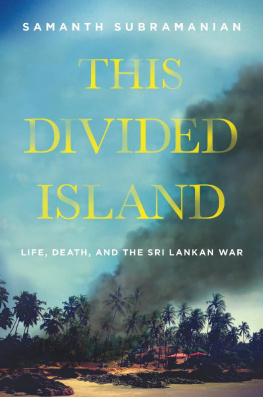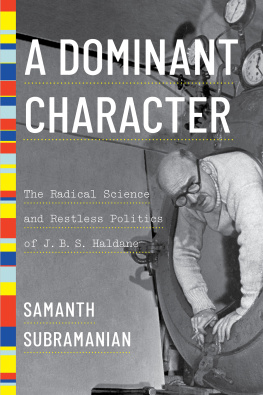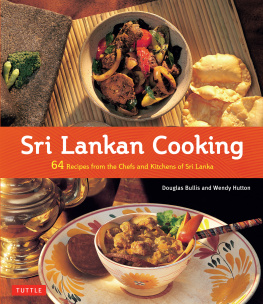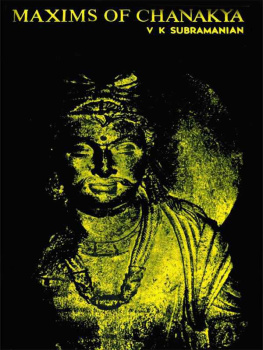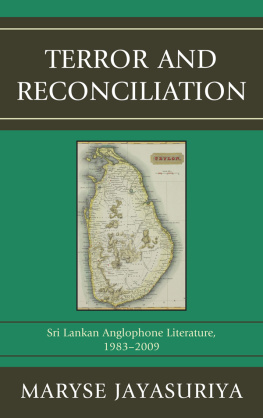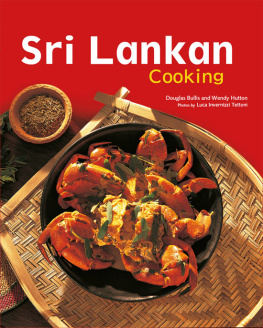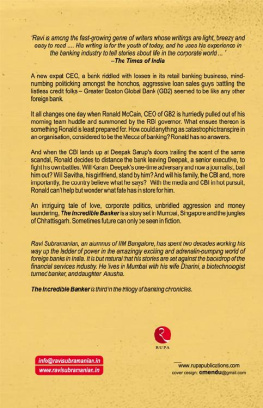Samanth Subramanian - This Divided Island: Stories from the Sri Lankan War
Here you can read online Samanth Subramanian - This Divided Island: Stories from the Sri Lankan War full text of the book (entire story) in english for free. Download pdf and epub, get meaning, cover and reviews about this ebook. year: 2014, publisher: St. Martins Press, genre: Detective and thriller. Description of the work, (preface) as well as reviews are available. Best literature library LitArk.com created for fans of good reading and offers a wide selection of genres:
Romance novel
Science fiction
Adventure
Detective
Science
History
Home and family
Prose
Art
Politics
Computer
Non-fiction
Religion
Business
Children
Humor
Choose a favorite category and find really read worthwhile books. Enjoy immersion in the world of imagination, feel the emotions of the characters or learn something new for yourself, make an fascinating discovery.

- Book:This Divided Island: Stories from the Sri Lankan War
- Author:
- Publisher:St. Martins Press
- Genre:
- Year:2014
- Rating:3 / 5
- Favourites:Add to favourites
- Your mark:
- 60
- 1
- 2
- 3
- 4
- 5
This Divided Island: Stories from the Sri Lankan War: summary, description and annotation
We offer to read an annotation, description, summary or preface (depends on what the author of the book "This Divided Island: Stories from the Sri Lankan War" wrote himself). If you haven't found the necessary information about the book — write in the comments, we will try to find it.
This Divided Island: Stories from the Sri Lankan War — read online for free the complete book (whole text) full work
Below is the text of the book, divided by pages. System saving the place of the last page read, allows you to conveniently read the book "This Divided Island: Stories from the Sri Lankan War" online for free, without having to search again every time where you left off. Put a bookmark, and you can go to the page where you finished reading at any time.
Font size:
Interval:
Bookmark:
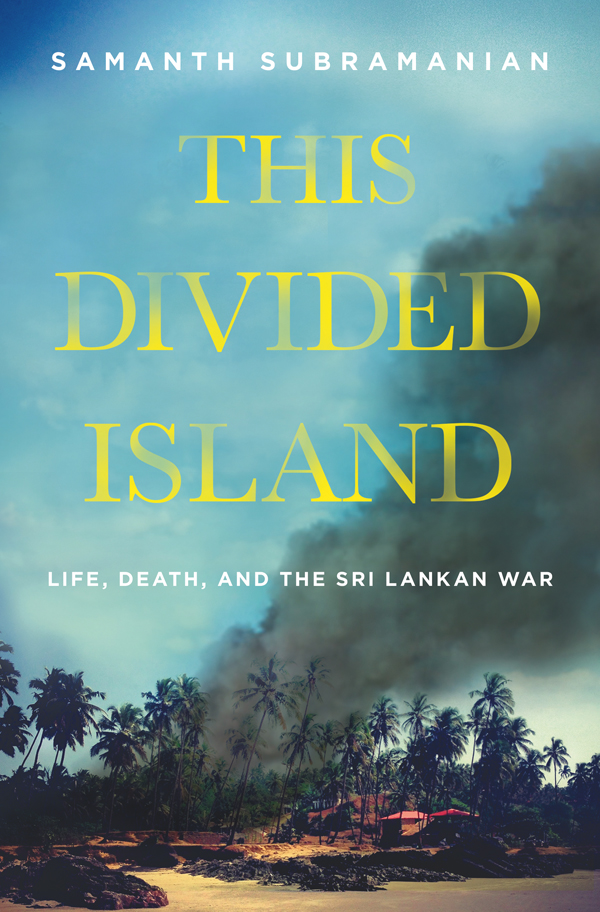

The author and publisher have provided this e-book to you for your personal use only. You may not make this e-book publicly available in any way. Copyright infringement is against the law. If you believe the copy of this e-book you are reading infringes on the authors copyright, please notify the publisher at: us.macmillanusa.com/piracy.
For Sanjaya, who, like his namesake in the Mahabharata, opened up the world to his unseeing friend
I wish I could persuade you to regard death as casually as we do over here. In the heat of it you expect it, you are expecting it, you are not surprised by anything anymore
Jorie Graham, Spoken from the Hedgerows

1948: Ceylon gains independence from Great Britain.
1956: The Sinhala Only Act is passed, making Sinhalese the language of governance and failing to recognize Tamil as an official language.
1958: Anti-Tamil riots break out. An estimated three hundred Tamils across the island are killed.
1971: The government implements the standardization policy, setting higher benchmarks for Tamil students to enter universities.
1972: Ceylon is renamed Sri Lanka, and Buddhism is given the foremost place among the countrys religions.
1975: Velupillai Prabhakaran, 21 years old, assassinates the mayor of Jaffna, Alfred Duraiappah.
1976: Prabhakaran creates the Liberation Tigers of Tamil Eelam (LTTE), a successor to his earlier group, the Tamil New Tigers.
1977: Following the general elections, a fresh wave of anti-Tamil riots breaks out. Around three hundred Tamils are slaughtered.
1983: A Tiger ambush of an army convoy in Jaffna triggers the worst anti-Tamil riots yet. Although numbers are unclear, up to three thousand Tamils may have been killed. The ambush is often considered the beginning of the civil war.
198790: Indian Peace Keeping Forces swarm across the north and the east, trying without success to eliminate the Tigers. When they retreat, the Tigers hold Jaffna.
1991: In retribution for sending in peacekeeping forces, the Tigers assassinate the former Indian prime minister Rajiv Gandhi.
1993: The Tigers are held responsible for the assassination of the Sri Lankan president Ranasinghe Premadasa.
1995: After a brief truce, the Tigers lose control of Jaffna.
2002: Norway brokers a ceasefire between the Tigers and the government.
2004: The Tigers, having pulled out of peace talks the previous year, go on the offensive to regain the east, signalling a return to hostilities. That December, a tsunami kills 30,000 Sri Lankans.
2005: Mahinda Rajapaksa becomes president of Sri Lanka.
2006: The beginning of the fourthand lastphase of the civil war.
2007: The government announces that it has cleared eastern Sri Lanka of Tigers.
January 2009: The army captures Kilinochchi, which has served for a decade as the Tigers capital.
February 2009: Concern mounts over the welfare of civilians trapped in the battle zone.
May 2009: The government announces a victory over the Tigers, even as it shrugs off accusations of bombing civilians. Prabhakaran is killed on the final day of fighting.
2010: Rajapaksa wins re-election to the presidency.
2011: The United Nations releases a report accusing the Sri Lankan army of war crimes. The report estimates that forty thousand civilians may have died in the final months of the civil war.
In May 2009, when the civil war ended in Sri Lanka, the world sat up and took note. Wars rarely end in such punishing victories these days, and all things considered, perhaps that is a blessing. In its crusade to section off an independent state for Sri Lankas Tamil-speaking minority, a rebel force of guerrillasthe Tigersfound itself squeezed into the northeast corner of the island, hiding behind hundreds of thousands of Tamil civilians on the run. Here the Sri Lankan army, wise to its advantage, rained shells from the sky, wiping out the Tigers but also uncaringly, or even deliberately, slaying thousands of civilians. The United Nations thought more than 40,000 non-combatants must have died in this waymore than 40,000 women, children, and men routed from their homes, trapped on the front, baking in the early summer heat, huddling in tarpaulin-covered bunkers, praying for survival. The shells pulverized trees and gouged out the earth. As a pebble does in a tin box, the carnage reverberated particularly loudly within this small island, this knot of rock just off the coast of India.
For a while, the sheer misery and tragedy of these events swamped any ability to think about the full arc of the war. Interrupted only by a couple of short, patchy ceasefires, Sri Lanka fought the Tigers for the better part of three decades. Unwatched by most of the world, the war raged and raged, feeding itself some strange fuel that lent it such durability; it must be among the longest continuous wars since the beginning of the twentieth century, if not the very longest.
It is curious to locate the proximate cause of a war in something as noble as a desire for education. When Sri Lanka broke free of British rule in 1948, the seats in its universities were occupied to disproportionately high levels by the minority Tamils, who through quirks of colonial history spoke better English and were better educated than the majority Sinhalese. The Tamils then went on, after university, to fill the civil service, the countrys most reliable provider of employment at the time. To the countrys Sinhalese who suddenly found themselves empowered with a vote, and therefore to the government, this state of affairs appeared too lopsided and unfair to continue.
When laws and quotas were enacted to protect the interests of the Sinhalese, the Tamils felt they were being discriminated against. The frictions between the two communities erupted repeatedly into ghastly riots; in the worst of them, the Black July riot in 1983, roughly 3,000 people were killed, many of them burned alive. Tamil houses and shops were looted and burned, and 150,000 Tamils were rendered homeless. When a clutch of Tamil militant groups had begun to emerge in the 1970s, to agitate for a free Tamil state, they found only a trickle of willing recruits; after Black July, though, they were flooded by young men and women wanting to fight, and none more so than the Tigers.
Starting as a ragtag outfit carrying out the odd guerrilla attack, the Tigers grew into a fearsome terrorist organization. They ran arms and drugs, pulled in funds from a Tamil diaspora scattered across the planet, killed thousands of civilians, assassinated presidents and prime ministers, and perfected the art of the suicide bomber. They kept their own people, the Tamils, in line by intimidation and murder. In their full pomp, the Tigers controlled vast wedges of territory in the north and east of Sri Lanka, where flat, hot, sandy coasts meld gradually into jungle. Here they ran their own country in all but name, collecting taxes and policing the streets and adjudicating disputes. But the Sri Lankan state was always just outside the door, impatient to snatch back its land, working itself up into a state of angry nationalism. Buddhism, the religion of most Sinhalese, developed a vocal right wing; its monks entered politics, pressed for a more merciless war, and dreamed of a purely Buddhist island.
Font size:
Interval:
Bookmark:
Similar books «This Divided Island: Stories from the Sri Lankan War»
Look at similar books to This Divided Island: Stories from the Sri Lankan War. We have selected literature similar in name and meaning in the hope of providing readers with more options to find new, interesting, not yet read works.
Discussion, reviews of the book This Divided Island: Stories from the Sri Lankan War and just readers' own opinions. Leave your comments, write what you think about the work, its meaning or the main characters. Specify what exactly you liked and what you didn't like, and why you think so.

